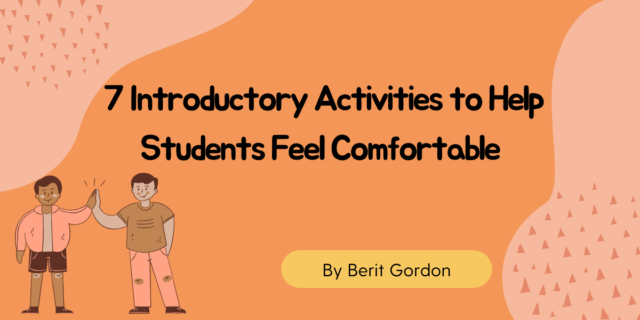Lisa Birno is a Heinemann Fellow with the 2014–2016 class, and has been an educator for 27 years. In today's post, she discusses her action research as it relates to the purposeful use of talk in classroom equity.
Lisa Birno is a Heinemann Fellow with the 2014–2016 class, and has been an educator for 27 years. In today's post, she discusses her action research as it relates to the purposeful use of talk in classroom equity.

by Lisa Birno
He was that kid. The kid who spent too much time out of the room, too much time with his head on his desk, too much time avoiding anything and everything. The kid with a history of too much time spent living down to his perceived low expectations.
But today he spoke.
“It’s obvious—she’s afraid of what they’ll think.” It was a simple statement. But it was accurate. It was insightful. And it came from a child who, up until that moment, had rarely participated in a class discussion. Cautiously, I asked him to explain his thinking.
“It said she was hesitant and she was thinking about the other girls,” he replied, referring to the text. “That’s what you do when you’re worried about what they’ll think.”
Other students began snapping their fingers to agree with what he said. I wanted to bottle the moment. A child who struggled in many ways was suddenly providing insight for the class.
I first became interested in the purposeful use of talk as a vehicle for thinking and learning when after years in the classroom teaching primary and intermediate grades, I became an elementary reading specialist teaching struggling readers. Little did I know how much these students would teach me.
It didn’t take long to understand a bit about what it feels like to be called a struggling reader. I learned that interventions don’t reveal our strengths. I learned that the way teachers view children is powerful—and potentially damaging. I learned that the person who really needed to learn was me.
For the next six years I was a reading specialist in my suburban school district. Our demographics changed over this period. We had more kids of color, more second language kids, more diversity in our population, and it brought richness to our community. It also brought challenge. This richness meant that our differences were more noticeable. It was clear now that not every child learned the same way. I needed to find new ways to reach my students.
I realized that the purposeful use of talk unlocked many of the barriers my students faced.
As a district we began exploring how better to meet the needs of our diverse community, but it was a wise mentor who pointed me toward the purposeful use of talk. She helped me see that talk is the foundation of literacy. I began to read about accountable talk: Peter Johnston, Maria Nichols, Ellin Keene, all helped me see clearly what James Britton described: “Reading and writing float on a sea of talk.” As I continued working with struggling readers, my beliefs shifted. I saw that these readers are often still struggling simply because we haven’t figured out the best way to teach them. It was humbling to say the least.
I realized that the purposeful use of talk unlocked many of the barriers my students faced. I saw that talk didn’t just level the playing field for my struggling students. When we used talk effectively, even the highest-achieving students benefited.
Budget cuts and a changing administration prompted me to head back to the classroom. It was time to apply what I’d learned. I was excited to teach sixth graders in an elementary building that was child-centered. The richness I valued was reflected in my class: twenty-eight kids from widely varying backgrounds—different languages, races, experiences. Although I worked to incorporate the purposeful use of talk into my classroom, it didn’t happen overnight. But every time we achieved it, there was another glimpse, another small moment when everyone benefited and we were truly a learning community—building our collective understanding, engaging in our work. It left me eager for more.
This ultimately led to an action research question as a Heinemann Fellow. At our first Heinemann meeting in June of 2014 we listed problems in our practice. Reflecting on my year, I zeroed in on the things I worried about: meeting the needs of all my students; effectively teaching the purposeful use of talk; finding a way to help all students be important contributors to our class; finding the gifts in each child; and ensuring every child achieves at high levels. As I examined the list, I thought back to the small glimpses throughout the past year. These glimpses were the moments I wanted to extend, when the voices we didn’t always expect to lead us did.
And so my journey as a Heinemann Fellow begins. I want to sustain these glimpses. I want to strive for those least-empowered children to join the rest, elevating our collective intelligence. I want to know what instructional strategies help increase equity and engagement through the purposeful use of talk. I want every child to see just how important—and brilliant—she or he really is.
♦ ♦ ♦
Lisa Birno is a sixth grade teacher with Eden Prairie Public Schools in Minnesota and a member of the 2014–2016 class of Heinemann Fellows. Her action research will focus on strategies that promote equitable and engaged talk in a Midwestern, suburban sixth grade classroom.
Please visit the Heinemann Fellows page to learn more.
Related Reading

The following is an adapted excerpt from Edmund Adjapong's forthcoming Teach Like an MC: Hip-Hop Pedgaogy in the K-12 Classroom.

